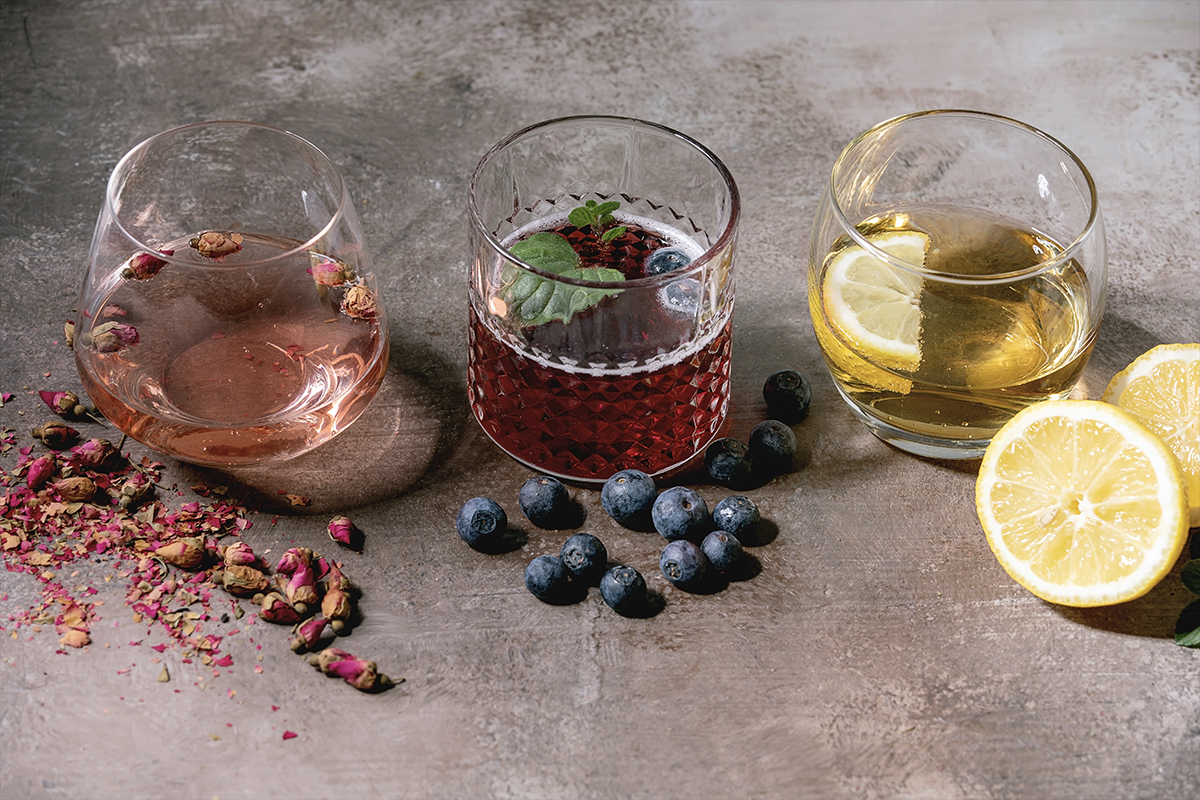The recent advent of social distancing for the good of flattening the COVID-19 curve has forced many of us to learn a hobby out of inevitable boredom. Many people have taken to picking up new skills because it turns out learning is a lot of fun. Let’s throw another knowledge bone atop the homebound hobby pile. In this article we’ll give you some basic instructions on making liqueurs at home.
Liqueurs are simple beasts typically composed of three primary components: base alcohol, flavoring, and sweetener. Mix up those ingredients to your own cacophonous content and you may be rewarded with a bespoke bottle of deliciousness. Bonus: homemade liqueurs make excellent gifts.
Equipment for Making Liqueurs
You can do this with very little equipment. At a minimum you should have some measuring cups, a small kitchen scale and an alcohol hydrometer (referred to as a “Proof and Tralle” hydrometer) for measuring the alcohol by volume (ABV). The hydrometer can be purchased through places like Amazon ($8).

The base alcohol is usually something neutral like vodka, but you can use anything you like, building something off rum, whiskey, brandy, gin and much more. Let’s stick with vodka for now. Ideally you’d get something a bit stronger than the 40% ABV versions that litter the store shelves but that’ll do if it’s all you have. Smirnoff makes a 50% ABV version of its eponymous vodka. Boyd and Blair in Pennsylvania makes a “professional proof” vodka at 75.5% ABV.
Choose Your Flavor
Once you have your base spirit, you need to decide what kind of flavoring you want to use. This can be anything really. Fruits work well. Nuts, chocolate and coffee are all liqueur staples. Raid your spice cabinet. Want a dried rosemary liqueur? Go for it. Edible flowers? Make your own crème de violette. Whatever you choose, just make sure to do your homework to ensure it is safe to eat. Don’t take chances.
Infusing
The next step is infusing your ingredient(s) into your base spirit. The amount you’ll need really depends on the ingredient. Start with one liter of spirit and add it to a two-liter glass mason jar. Fill the jar up with your favorite fruit or botanical so that the total volume reaches the two-liter mark. It helps to cut or lightly crush whatever your flavoring is so that you expose more surface area for the flavors to infuse into the spirit.

Let the jar sit in a cool place away from sunlight for several days to several weeks. The amount of time required depends on what your flavoring is, how much you have of it, and how strong your spirit is. Shake it up a little every day and taste it every other day. Once you’ve reached the right amount of flavor in the spirit then you can strain out the flavoring material using some cheese cloth or a muslin bag. Measure out how much liquid you have left (there is usually some spirit lost through absorption into the flavoring material). Measure the alcohol content with your hydrometer and make note of the abv and volume.
Sweetening
The next step is sweetening the liqueur. Most people use standard table sugar which is fine, but Belgian beet sugar (available through most homebrewing supply stores) works well and doesn’t produce a cloudy haze in the final liqueur like normal sugar. Of course, you can get creative and use whatever floats your boat. Agave syrup, brown sugar, honey, maple syrup and many more have all been used for making liqueurs. Want a “sugar-free” liqueur? You can use a product like Stevia if you like. The choice is yours. So is the level of sweetness.

The amount of sweetness you add to a liqueur is a matter of taste and will likely necessitate some experimentation on your part. Some people like making liqueurs that are bone dry while others want a pure sugar bomb. Liqueurs by definition have at least 2.5% sugar by weight and products referred to as “crème” typically start at 25% by weight.
Here’s an easy place to begin and you can adjust your techniques later. If you have 1000 ml of 50% ABV infused spirit, add 1000 ml of simple syrup (simple syrup is simply equal weights of water and table sugar heated and blended together). This will give you a liqueur of approximately 25% ABV and a sugar content of ~25% by weight (the actual calculations are quite a bit more difficult than that and not worth getting into here). From there you can adjust the sweetness in future batches as you see fit.
Drink Now or Wait
Your new bespoke liqueur can be drunk now but will improve if you let it sit in the bottle for 2-3 months. The flavors will meld together, and the alcoholic edges will smooth out.
Making liqueurs is a lot of fun and there are worlds of possibility within them. Hopefully the preceding paragraphs give you enough basic information to get started. And remember to share your creations with friends when the trials of isolation are over! Cheers!
Looking for a base for making liqueurs?
With Distiller, you’ll always know what’s in the bottle before you spend a cent. Rate, Review, and Discover spirits. Head on over to Distiller, or download the app for iOS and Android today!
Want to enjoy Distiller ad-free? Join Distiller Pro today to support the Distiller platform and keep ads off of your screen.

